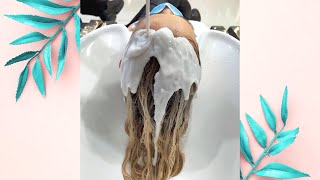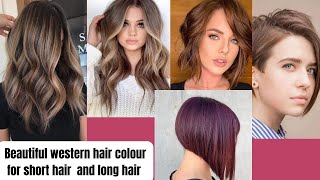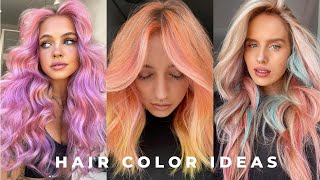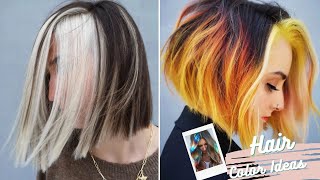How To Use a Hair Toner for Brassiness: Step-By-Step Guide
- Posted on 31 August, 2019
- Hot Topic
- By Hollee Wood
Alright… I want you to visualize something for me here.
Think back to that time you squeezed in a DIY dye job in-between hair appointments, and it went a little something like this:
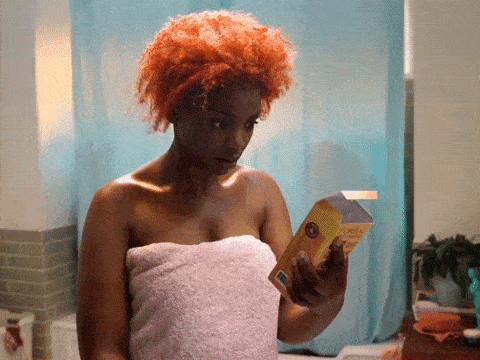
There’s no shame… we’ve all been there. I’ve had orange hair more times than I can count.
Now think back to how you felt when you took the walk of shame into work or school the next day. Not so fun, was it?
But if we’re all being honest here, I should tell you that there’s a super easy way to banish the brassiest of tones. It’s really pretty simple… you just need a quick science lesson.
So embark with me on this journey, friend. Here is the ultimate guide on how to use a hair toner for brassiness.
💡TIP: Pin this article to your Hair Tips or Hair Color board so you can always reference it when you need to!
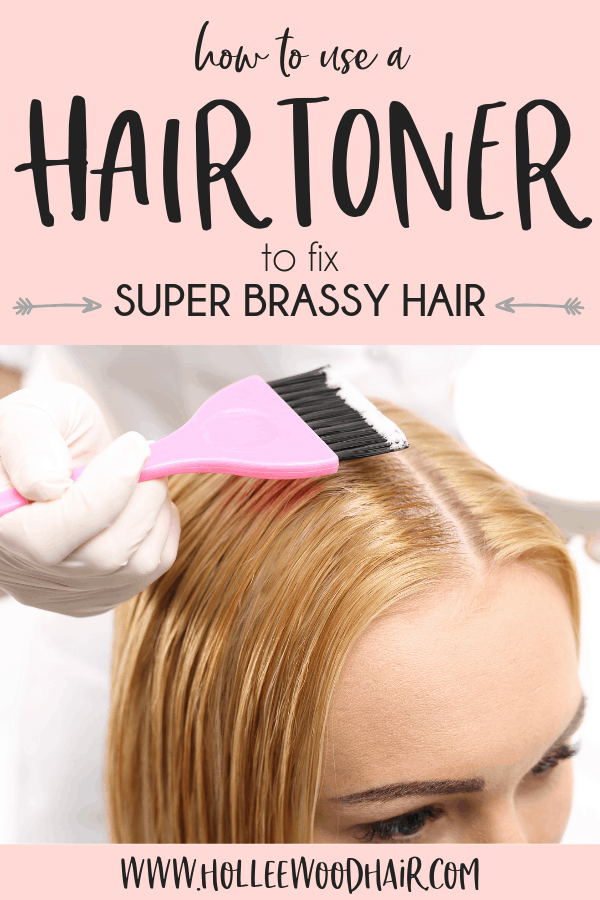
*This post contains affiliate links meaning that if you make a purchase after clicking the link, I earn a small commission at no additional cost to you. This helps me provide the best possible content on this site for free. Keep in mind that I only link to quality products that I use myself and feel would be beneficial for my readers. Please read my full affiliate disclosure for more information.
Let’s get real:
So here’s the thing: hair color is not some magical cream you put on your hair that makes it turn out exactly like the box says it will. There are tons of factors that contribute to the end result, regardless if you’re using hair dye or bleach.
Some factors to consider when formulating hair color are:
- The color you’re starting with
- The target color
- If the hair has been previously colored or not
- How many times you’ve altered your hair
- The condition of the hair
- Hair Texture
If the color formulation isn’t precise, it can quickly go awry.
One of the most common mishaps that can occur is brassy orange hair… and like I mentioned before, this happens all the time. Don’t feel bad if you’re a victim of orange hair.
You’re here because you want to fix it, right?
Psssst… to learn more about formulating the perfect hair color, check out my definitive guide to DIY hair color.
So What Causes Brassy Hair?
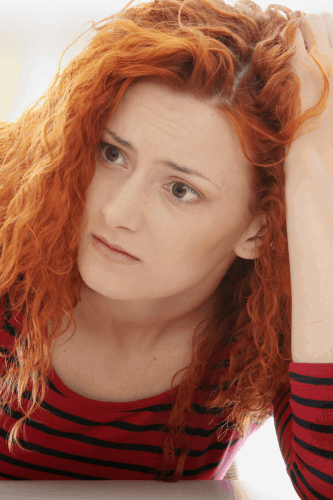
In order to learn about using a hair toner for brassiness, you first need to learn about some color theory. Let’s start by talking about the color level system.
In the hair industry, the value of hair color is measured on a scale from 1-10, level 1 being black and level 10 being platinum blonde.
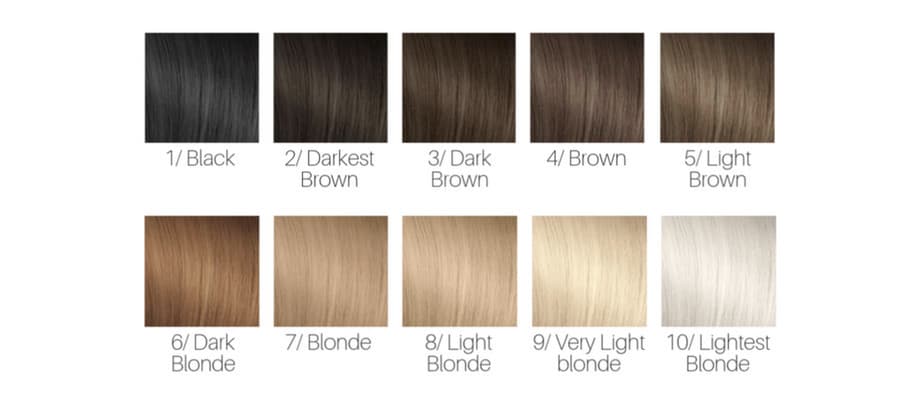
Depending on how dark your hair is, to begin with, there are certain stages your hair must go through to get to the level 10 lightest blonde.
When lightening your hair (aka using bleach), the blue color molecules are the first to be removed (and they tend to escape quickly from the hair shaft). Once the blue molecules are gone, you’re left with a shade of reddish-orange hair.
And guess what? These molecules take way longer to lift out of your hair.
Depending on how long you process your hair for, you’ll end up with some form of reddish-orange, orange, yellow or pale yellow hair color.
It’s important to note that when lightening your hair with dye instead of bleach, color molecules will also deposit into your hair, which may or may not combat brassiness (depending on what color you use).
Some Important Things to Know About Color Are:
- If your hair has been previously colored, no matter how long ago, it will take a lot more work to lighten it. It’s also to important to know that cannot be lightened with hair dye (see: The Golden Rule of Lifting Hair Color).
- Hair dye typically can’t lift virgin hair as high as bleach can. Depending on what level of developer you’re using, and how dark your hair is, you can safely lift your hair up to 4 levels with dye. High-lift colors can go a smidge lighter, but if you want ultra-light hair, bleach is your best bet.
- When bleaching your hair, you should always use a toner for brassiness. Even if your hair gets super light, toning it will give it a more polished look.
Hair Color Theory 101
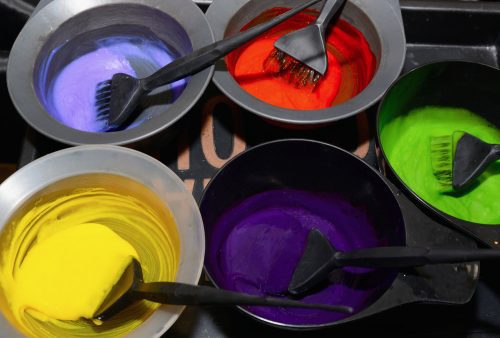
So now that you know where brassy hair comes from, we should talk a little bit about color theory. It’s necessary to your understanding of how hair toners work.
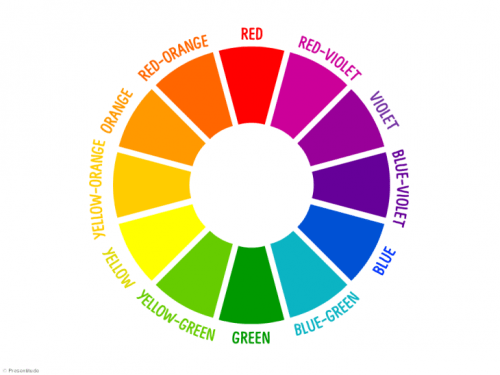
This is the color wheel.
Every color on the wheel comes from the three primary colors: red, blue, and yellow.
When you mix yellow and blue, you get green (directly in the middle of yellow and blue). Similarly, blue and red make violet and yellow and red make orange. Green, violet, and orange are what we call, “secondary colors.”
When you take it one step further and mix violet and blue, you get blue-violet, etc. and these are known as “tertiary colors.”
Most of that is not important when learning how to use a hair toner for brassiness. However, there is a key takeaway you can learn from looking at the color wheel.
Colors that are directly across from each other on the color wheel are called “complementary colors,” and they can either intensify or neutralize each other.
Do you see where we’re going with this?
So What Does Hair Toner Do?
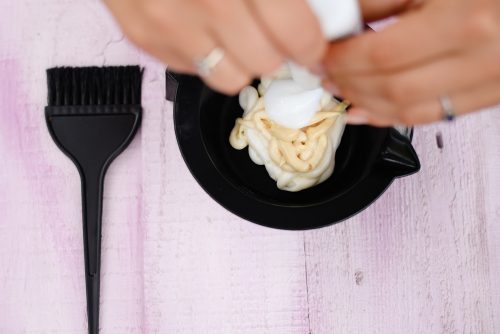
Now that we know that complementary colors neutralize each other, let’s talk about what hair toners are.
Pretend you just bleached your hair and now it’s a vibrant yellow color. We can neutralize yellow tones by adding it’s complementary color, purple.
Usually, purple-based toners and dyes are known as a “platinum” color. In other words, platinum blonde is really just a fancy way of saying hair that was bleached and toned with a purple toner.
So basically, toners work by depositing the complimentary color into the hair to neutralize the undesired tone.
They will not make the hair any lighter, and they will not miraculously give you the color you want. You need to have realistic expectations and understand that all they do is tone down unwanted colors.
If you’re looking for a lighter shade, you’ll need to lighten your hair again at a later time. Please remember that going ultra-light is a process that may take several weeks to achieve.
How to Use Hair Toner for Brassiness:
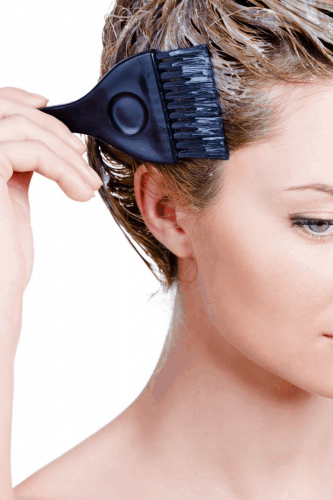
The first thing you should do is determine what undertones your hair has. For example, do you have orange or yellow tones?
Once you’ve figured that out, you need to find the base color of your toner. Here’s a sweet corrective color/hair toner chart I found from the Killer Strands Hair Clinic website:
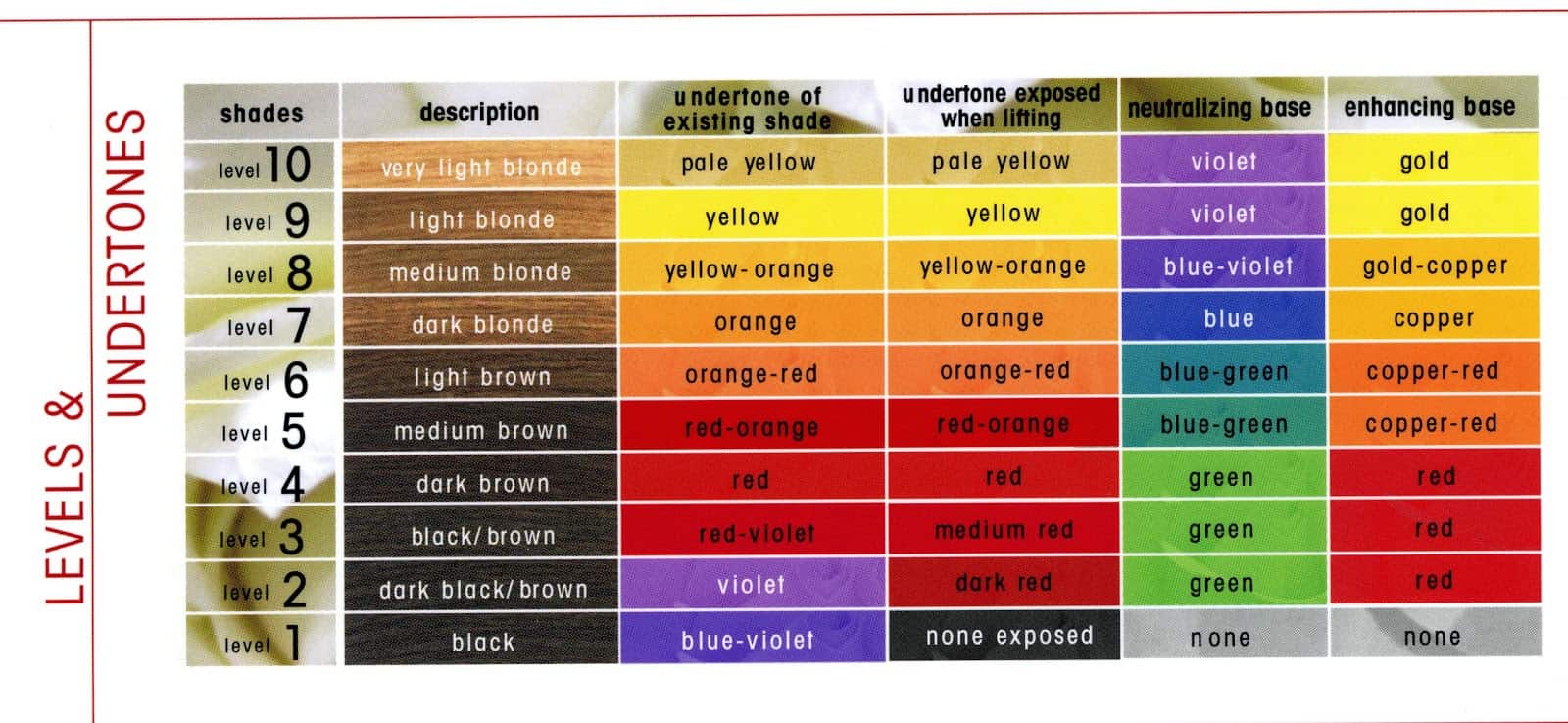
When using this chart, match your hair (after lightening) to a shade in the middle column (the one that says, “undertone exposed when lifting.“)
Next, move directly to the right column to see what base color you should use to neutralize the unwanted tone.
Like I previously mentioned, purple toners work with yellow hair. Similarly, you’ll want to use an ash hair toner or a blue toner for orange hair.
Want to know how to neutralize red tones in hair? You guessed it! Green-based toners work against reddish tones, although these are typically harder to come by.
The Different Types of Hair Toners
- Purple shampoo is one of the best hair toners for yellow hair. Just use it in between processes to keep your hair looking fresh. It works by depositing purple pigments into your hair every time you wash it. Remember that purple shampoo only benefits hair that has yellow undertones; if your hair is more orange, this might not benefit you.
- Ammonia-based toner works by depositing color molecules into your hair; these are the most commonly used types of toner. The Wella Color Charm line has a fabulous collection of DIY hair toners.
- Just use plain-old hair dye (with a blue or purple base) to tone out the brassiness. Find out how to read the color numbers/letters to see what the base color is and then follow the manufacturer’s directions.
General FAQ
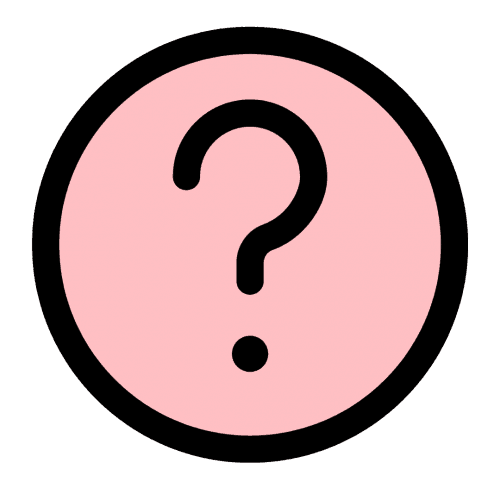 What is a hair toner?
What is a hair toner?A hair toner is designed to deposit pigments into your hair to neutralize the unwanted tones. It will not lighten your hair or drastically change the color.
What toner is good on orange hair?Wella Color Charm T18 is one of the best DIY hair toners for orange hair.
How do you tone brassy hair?To use a hair toner for brassiness, you should first determine what shade your hair color is (orange, yellow, pale yellow, etc.). Next, check what the complementary color is for your hair color, and choose a hair toner with that color as a base. Apply the toner like you would apply hair color and process it according to manufacturers directions.
It should last about 4-5 weeks before needing to be touched up. Using a purple shampoo will help prolong the life of the toner.
Final Thoughts
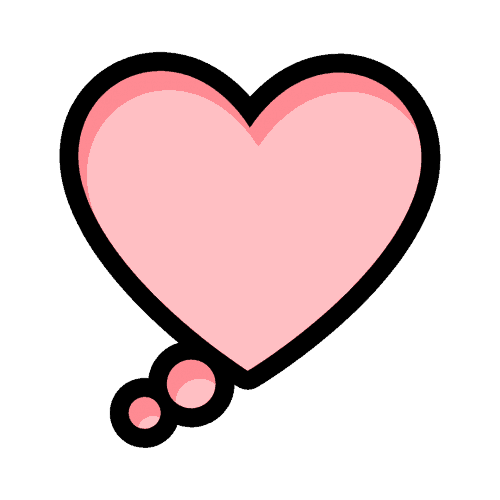
You don’t have to have brassy hair to use a toner. If you can get your hair to a very light pale yellow, you can pretty much tone with whatever color you want.
For example, pale yellow can be toned into champagne blonde, strawberry blonde, ash blonde, or pretty much any other shade of blonde hair.
But if you have brassy hair, a toner is definitely the way to go. Depositing complementary color tones into your hair will neutralize and “tone down” the unwanted nasty tones.
Until next time,
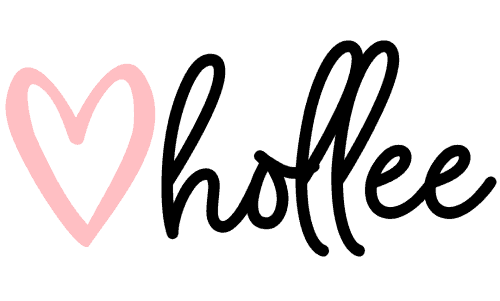
Your Turn: Do you have any other questions about hair dye? Do you feel confident with your skills to use a hair toner for brassiness? Let me know what you think in the comments section below! 👇🏼👇🏼👇🏼
RELATED:
- How Do Hair Toners Work?
- The Definitive Guide to DIY Hair Color
- The Golden Rule of Lifting Hair Color
- How to Read Hair Color Labels/Numbers
- How Hair Dye Works: The Interesting Science Behind It

